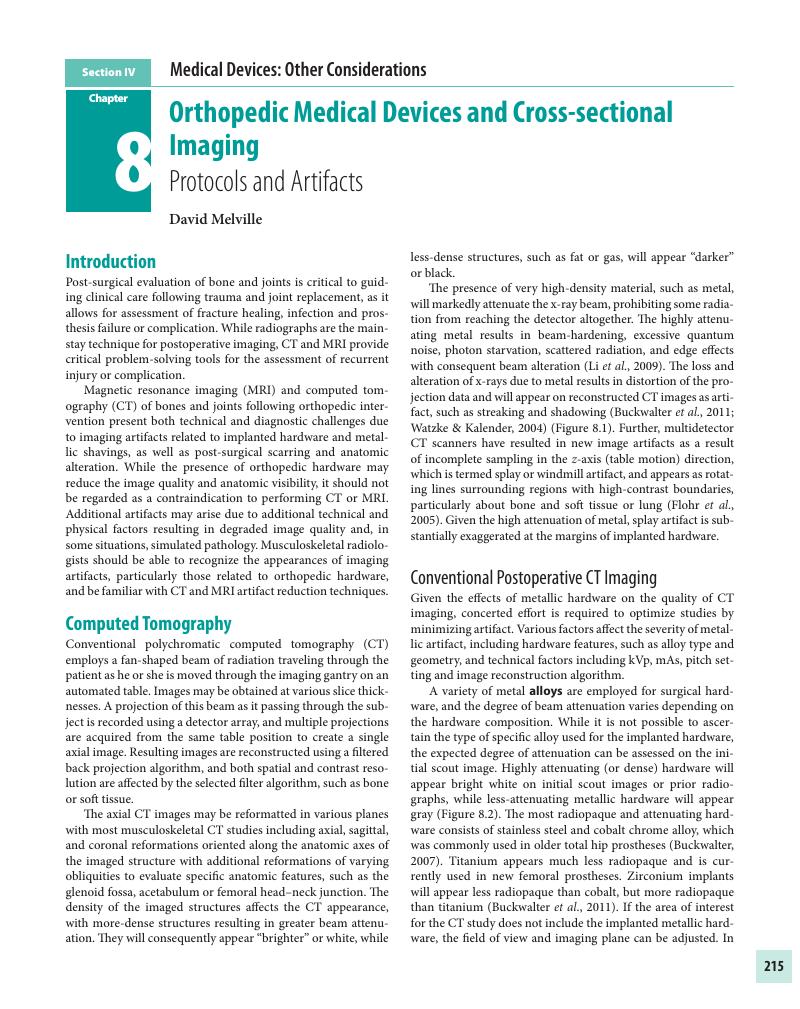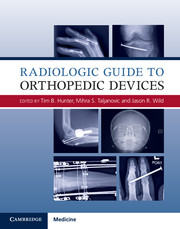Book contents
- Radiologic Guide to Orthopedic Devices
- Radiologic Guide to Orthopedic Devices
- Copyright page
- Dedication
- Contents
- Contributors
- Foreword
- Acknowledgments
- Section I Introduction
- Section II Orthopedic Apparatus
- Section III Neck and Spine Apparatus
- Section IV Medical Devices: Other Considerations
- 8 Orthopedic Medical Devices and Cross-sectional Imaging
- 9 Nuclear Medicine Imaging
- 10 Foreign Bodies
- 11 Medical Devices
- Section V Gallery of Orthopedic Medical Devices
- Medical Devices, Medical Procedures, and Foreign Bodies
- Orthopedic Medical Device Manufacturers and Associated Useful Websites
- Index
- References
8 - Orthopedic Medical Devices and Cross-sectional Imaging
Protocols and Artifacts
from Section IV - Medical Devices: Other Considerations
Published online by Cambridge University Press: 05 May 2017
- Radiologic Guide to Orthopedic Devices
- Radiologic Guide to Orthopedic Devices
- Copyright page
- Dedication
- Contents
- Contributors
- Foreword
- Acknowledgments
- Section I Introduction
- Section II Orthopedic Apparatus
- Section III Neck and Spine Apparatus
- Section IV Medical Devices: Other Considerations
- 8 Orthopedic Medical Devices and Cross-sectional Imaging
- 9 Nuclear Medicine Imaging
- 10 Foreign Bodies
- 11 Medical Devices
- Section V Gallery of Orthopedic Medical Devices
- Medical Devices, Medical Procedures, and Foreign Bodies
- Orthopedic Medical Device Manufacturers and Associated Useful Websites
- Index
- References
Summary

- Type
- Chapter
- Information
- Radiologic Guide to Orthopedic Devices , pp. 215 - 235Publisher: Cambridge University PressPrint publication year: 2017



